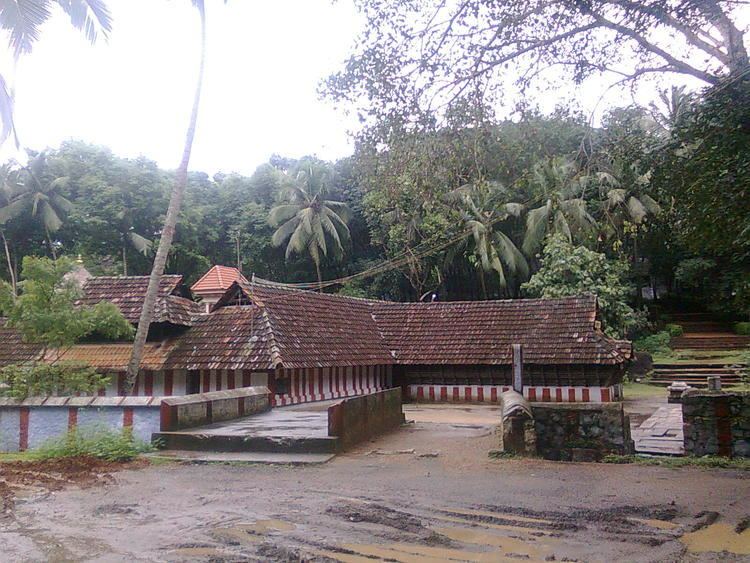 | ||
Thirunanthikarai is a village situated in Thirparappu panchayath, in the Kanyakumari district of Tamil Nadu, India. This village comes under the post office of Kulasekharam, 3 km away, and is located along the Kulasekharam–Pechiparai road. The primary revenue source for the area is natural rubber production and tapping. Many of the youth of Thirunanthikarai work in Gulf countries and their money helps support the village. 80% of the people speak Malayalam, 20% speak Tamil. The traditions and customs of the people are similar to those of the people of Kerala.
Contents
Map of Thirunanthikarai, Tamil Nadu 629161
Temples
Thirunanthikara Nanthishwaran Temple, Thirunanthikara Cave Temple, Peedavilai Mutharamman Temple, Ayyavazhithangal are the important places of worship in this area. Thirunanthikkara Siva Temple is 37 km from Thiruvananthapuram en route to Kanyakumari. Centuries old mural paintings have great value in the history of south Indian art. They are protected by Archaeological Survey of India. Thirunanthikkarai Temple is situated on the river banks of Nandhiaaru. The temple is built in the traditional Kerala style of temple architecture. Though the temple is the abode of Shiva, a shrine of Lord Vishnu is also present in the temple facing Lord Shiva. There is an ancient rock-cut cave temple situated towards the northern side of this temple.
Thirunanthikarai Cave Temple is one of the hundreds of temples that are found in the southernmost region of India. It is a very ancient temple, probably dating to the 9th century AD, that is a symbolic pillar of Indian religion and culture. There are many sculptures inside the temple which are now extinct. The Thirunanthikarai Cave Temple is one of the founding stones of the Jain religion. Currently the Thirunanthikarai Cave Temple is under the purview and care of Archaeological Survey of India. According to research, in 1003 AD, King Raja Raja Chola celebrated his birthday here. He conquered Muttom, and named Mummudi Chola Nalloor as stated in the stone carvings available in the temple. Around the eighth century AD an ascetic named Veeranandi came from Thirunarunkondai Melappalli and stayed here to preach Jainism.
Peedavilai Mutharamman Temple is a Devi temple with years of tradition. It was renovated in May 2002 and an annual festival is conducted with participation from people of all religions. Peedavilai Mutharamman Temple is one of the temples where people can worship and make their offerings without any restrictions on caste, creed, religion or community. The annual festival which is known as 'Utsavam' is very famous. The five days of festival include professional dramas, film shows, competitions, dance and entertainment shows by local residents.
Other notable places
Thirunanthikara Government School is the village's only school.
Thirunanthikara Agricultural Co-operative Bank and Neethaji Memorial Library run with aid from the government of Tamil Nadu, serve the people of this area. Neetaji Memorial library was founded 50 years ago.
Thirunanthikara Pond is the major water source which maintains ground water level in the area throughout the year with water from Pechiparai Reservoir.
Thirunanthikara (திருநந்திக்கரை) was known as Thirunanthikara തിരുനന്തിക്കര (in Malayalam) before the merging of Kanyakumari district with Tamil Nadu.
Kuriji arts club and Vivekananda arts club are two notable arts clubs.
Notable residents
Former Indian Space Research Organisation chairman G. Madhavan Nair was brought up in Thirunanthikara.
